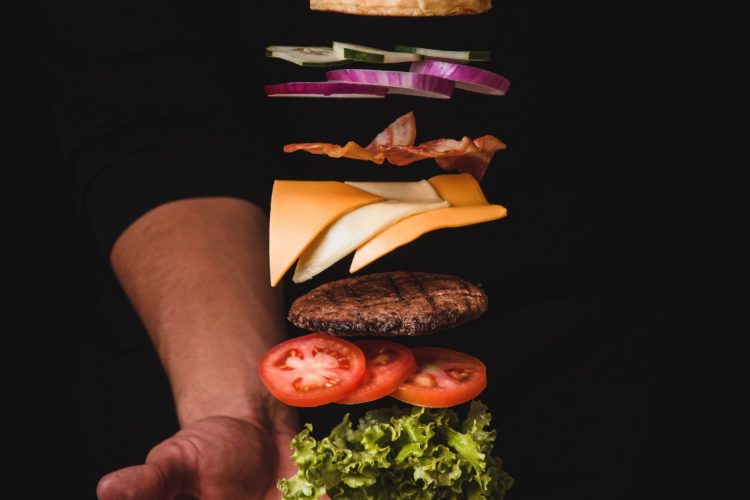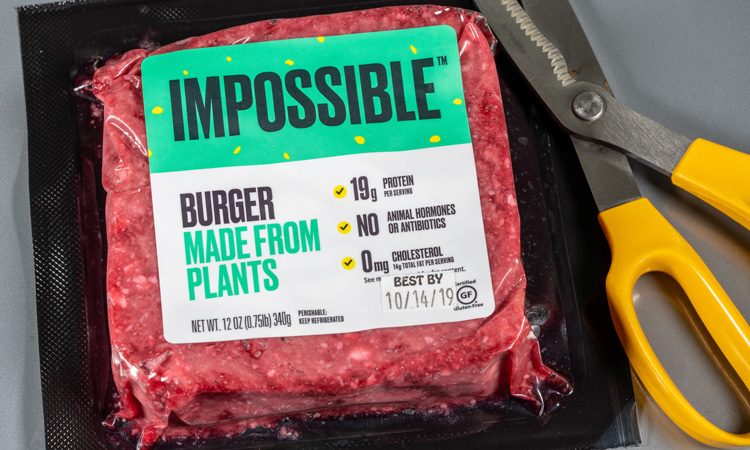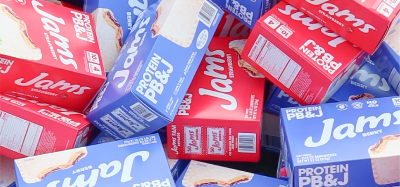“And, and, and” – the role of alternative proteins in feeding the future
- Like
- Digg
- Del
- Tumblr
- VKontakte
- Buffer
- Love This
- Odnoklassniki
- Meneame
- Blogger
- Amazon
- Yahoo Mail
- Gmail
- AOL
- Newsvine
- HackerNews
- Evernote
- MySpace
- Mail.ru
- Viadeo
- Line
- Comments
- Yummly
- SMS
- Viber
- Telegram
- Subscribe
- Skype
- Facebook Messenger
- Kakao
- LiveJournal
- Yammer
- Edgar
- Fintel
- Mix
- Instapaper
- Copy Link
Posted: 5 October 2021 | Joost Matthijssen | No comments yet
Joost Matthijssen of Nutreco explains how alternative protein can be part of the solution to feeding an increased global population, rather than a sole saviour for the food industry.


The food and farming sector faces several urgent challenges that if unaddressed will have significant ramifications, not just for the industry, but for the future of humanity. Pressure to reduce the environmental impact of traditional agriculture and food production practices is mounting, while attention to tackling food waste is at an all-time high. In addition, compounding issues such as food security and malnutrition persist across the world. The United Nations’ Food and Agriculture Organization (FAO) has reported that hunger will increase by 24 percent by 2030.
It’s clear that the food and farming sector will experience levels of scrutiny it’s never seen before. The way the industry responds to these challenges could determine the sector’s sustainability for generations to come, with little room for error. Technology solutions, new means of production, and advanced farming techniques are all fundamental to ensuring the long-term stability, sustainability, and security of our global food systems.
The rise of alternative food proteins – a market estimated to be worth a potential $290 billion by 2035 – is one such solution. Alongside more traditional protein production methods, these proteins will play a critical role in future food production; alleviating the issue of global food security, easing the burden on the planet’s finite resources, and introducing a new way for food businesses to operate sustainably.
Alternative proteins unlock a competitive advantage
As consumers have become more conscious of their food choices, the demand for alternative protein production methods has also grown. In 2020, alternative protein companies raised £3.1 billion in funding, a significant step forwards and a clear indicator of projected growth of future demand.
Innovation in the alternative protein market is rapidly expanding, including products that are already widely commercially available such as plant-based meat, as well as earlier stage products closer to the research stage like cell-cultured seafood and fermentation-based dairy products.
Alternative proteins have the potential to unlock huge benefits, largely because they can be produced while placing a smaller burden on our limited natural resources. For example, the Good Food Institute (GFI) found that plant-based meat production uses 79-99 percent less water and 47-99 percent less land than traditional meat production, while also emitting up to 90 percent fewer greenhouse gas emissions.
The way that alternative proteins are created also means that production can be scaled up quickly – as products are developed in fermenters, bioreactors and factories rather than coming from animals reared on farms – therefore playing a critical role in improving food security, and addressing growing demand as a result of an increasing population.
Many plant-based protein companies, including Impossible Foods and Beyond Meat, have successfully driven down their production costs. Cell-based companies like Mosa Meat and BlueNalu are also very focused on driving down the cost of their cultured proteins. Many alternative protein producers will soon be able to offer a more affordable product price point, which will be key to mass consumer adoption and the long-term scaling up of the sector.


Impossible Meats is just one firm that has driven down its production costs
Fermentation: a critical part of the protein puzzle
While most of the attention goes to plant-based products already on supermarket shelves or cell-based protein capturing consumers’ imagination, fermentation-based proteins have received less attention. This is undeservedly so, as the Good Food Institute labelled it the “third technological pillar of the alternative protein revolution,” alongside plant-based and cultivated proteins, in its 2020 Fermentation State of the Industry Report.
Fermentation has been used in food products for millennia – to preserve food and make dairy products such as yoghurt and cheese – and has greatly developed in the last century, with there now being three main fermentation production methods within the alternative protein space: traditional, biomass, and precision fermentation.
Biomass fermentation, as an example, uses the high-protein content and rapid growth of microorganisms to efficiently make large amounts of protein-rich food. It’s an incredibly efficient way to produce high volumes of protein given that the doubling time of these microorganisms is hours, compared to months or years for animals.
An example of a company harnessing this protein production method is UK-based startup ENOUGH, which has just raised €42 million to scale up its business. When facilities are scaled up, its fermentation process can produce multiple tons of biomass every hour. Both the level and speed of production makes it clear that fermentation will be critical to addressing the global protein challenge.
A case of “and, and, and” not “either/or”
We are currently at the beginning of the alternative protein journey. With almost 10 billion people to feed globally by 2050, we should take an ‘and, and, and’ rather than an ‘either / or’ approach to the development of the alternative proteins market. This means viewing alternative proteins as working alongside traditional farming in order to feed our growing population, providing consumers with a wider variety of healthy protein source options, and helping to create a sustainable future for people and the planet.
In order to improve global food distribution we must harness all of the sustainable food production options we have available to us. Investment into new technological solutions and means of production, including fermentation-based food proteins, will be fundamental in ensuring the long-term stability and sustainability of our global food supply.
About the author
Joost Matthijssen is Director of Venturing & Business Development at Nutreco and oversees its corporate venturing team NuFrontiers, which is investing in technology to revolutionise protein production. With the NuFrontiers team, Matthijssen identifies, develops and invests in next-generation, sustainable products, models and services throughout the feed and food value chains.
Related topics
Cultured Meat, Environment, Health & Nutrition, Plant based, Proteins & alternative proteins, Research & development, retail, Sustainability
Related organisations
Beyond Meat, BlueNalu, ENOUGH, Impossible Foods, Mosa Meat, Nutreco









